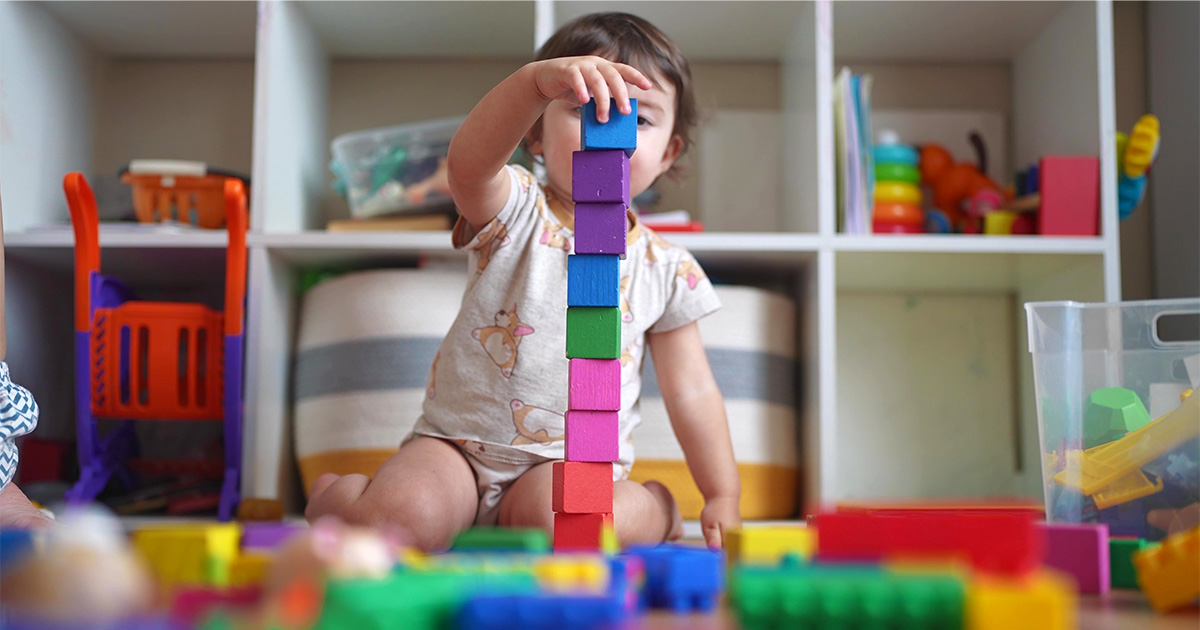- 877.684.1613
- Schedule a Tour

Just as we encourage language development in everyday conversation, including math vocabulary when interacting with children is essential too. It helps them to understand basic concepts and develop a positive attitude toward using math skills to solve problems.
Math is much more than counting. Math includes identifying patterns, sorting, comparing, measuring, building, creating shapes and forms, and describing attributes. Many common things can easily be turned into math-rich experiences.
Use these strategies to include more math language at home:
- Describe the steps you are following in a sequence. First, we are going to set the table. Second, we are going to eat dinner. Third, we are going to clean the dinner dishes.
- Use words to describe quantity and size. There are more apples than oranges in the refrigerator. That apple is bigger than that orange.
- Use positive problem-solving language. Let’s figure this out together. Let’s try again. What other ways could we solve this problem?
- Ask questions about the things your child observes. I saw that insect too. How did it fly? It did fly fast. I could see it had two wings.
Invite your child to participate in activities that naturally involve math:
- Put away toys together, starting with infants. Narrate your actions. Let’s put the balls inside the basket. I found two books to put on the shelf.
- Sing fingerplays with your child. They encourage counting with fingers and exploring patterns with rhythm.
- Cook or bake together. Cooking involves measurement, parts of a whole (fractions), and opportunities to discuss more vs. less.
- Sort clean laundry together. Organize by family members or other similar attributes.
- Set the table to practice one-to-one correspondence. How many people are eating dinner? There are 4 people, so we need 4 plates, 4 cups, etc.
- At the grocery store, encourage your child to get a certain number of each item and then check the item off the list. Count how many items are left to shop for.
By embedding and reinforcing math into everyday experiences, children are exposed to math in a joyful and playful context. Real-world scenarios like cooking and setting the table allow children to make deeper learning connections by applying math concepts in context.
